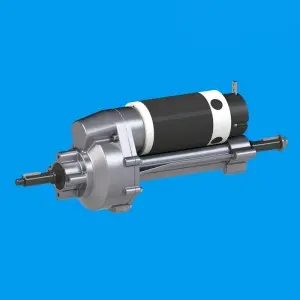The transaxle transmits power from the engine to the wheels and plays a vital role in the operation of the vehicle. While most car enthusiasts are familiar with the term “transaxle,” many may not be aware of the technical details of this important automotive component. In this blog, we will delve into the topic of how many axles a typical transaxle contains, providing a comprehensive understanding for all car enthusiasts.
Explore the anatomy of a transaxle:
Before we dive into the number of axles, let’s first have a general idea of what a transaxle is. A transaxle is a special type of transmission that combines the functions of the transmission, differential and axle components into an integrated unit. Transaxles are commonly found on front-wheel drive vehicles as well as some all-wheel drive and rear-engine vehicles.
Common components of a transaxle:
To better understand the number of shafts within a transaxle, one must be familiar with its common components. A typical transaxle consists of the following parts:
1. Input Shaft – The input shaft receives power from the engine and connects it to the rest of the transaxle.
2. Output shaft – The output shaft transmits power from the transaxle to the wheels.
3. Countershaft – The countershaft is responsible for meshing with the different gears and transmitting the power from the input shaft to the output shaft.
4. Differential – The differential allows the wheels to spin at different speeds so that turns can be made smoothly.
How many axles does a typical transaxle have?
Typically, a transaxle has two shafts: an input shaft and an output shaft. The input shaft receives rotational power from the engine, while the output shaft transmits that power to the wheels. These two shafts are critical to the proper functioning of the transaxle.
It’s worth noting, however, that some transaxles may incorporate additional shafts to enhance their performance. For example, vehicles equipped with dual clutch transmissions often have multiple input shafts for faster gear changes. Also, in high-performance vehicles, manufacturers may add intermediate shafts to efficiently handle the increased engine power.
The meaning of multi-axis:
The inclusion of multiple shafts within a transaxle serves a variety of purposes such as improving gear shifting, reducing power loss and increasing overall efficiency. By utilizing multiple axles, manufacturers can optimize power transmission and enhance the driving experience of the vehicle.
The transaxle is a complex yet fundamental part of the modern vehicle. Knowing what they do and the number of axles they typically contain is crucial for any car enthusiast or aspiring car technician. While a typical transaxle usually consists of an input shaft and an output shaft, the addition of additional shafts to certain types of transaxle can significantly affect the vehicle’s performance.
Next time you drive, take a moment to appreciate the intricacies of how your vehicle’s transaxle works. It’s a testament to the engineering marvels that make your journey possible.
Post time: Aug-30-2023


